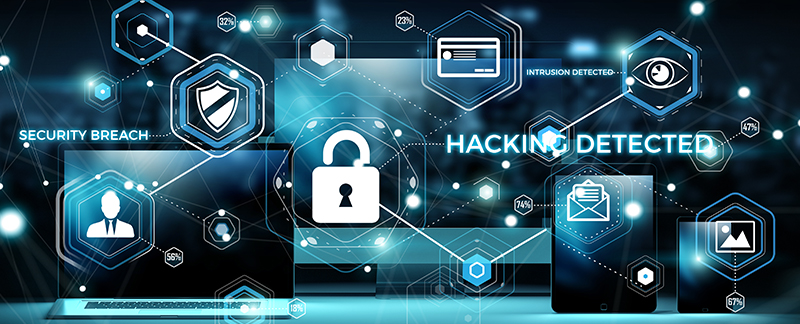
What Can Pandemics Teach Us About Cyber Security?
This article originally appeared on www.informationsecuritybuzz.com
We are living in a world in which we have either embraced technology, or we have been forced to use it (an example being online banking). Of course, we must also accept the fact that, unlike a few years ago, today, we are required to tolerate the state of the ‘always-on, always connected’ world - be it for business or for social purposes. As a result, now in many cases, we are dependent, or hooked on technology!
Our technological dependency in 2020, arrives in a number of different forms, such as, hand-held devices - upon which numerous applications can be installed (and deleted), Cloud and its related on-line services, or telecommunications such as low cost Voice over IP (VoIP) providing low cost calls. Of course, you can’t forget the smart, listening TV sitting quietly in the corner of the lounge along with the equally dangerous listening Smart Speaker with its ‘Hi-Spy’ capability. Yes, we are hooked in more than one way!
However, when we pull the lid back and look at the wired business world, this really does start to ramp up the observation. When one considers just how tied into technology we all are, particularly on an infrastructure which was never actually designed to carry such a heavy load of business related activities – AKA the Internet. We may then cast our eyes to the Financial Sector, and in particular, the failing of systems, ranging from banking outages and ATM infrastructures failures. So we may conclude that, yes, when it comes to dependencies, not only is it proven that we are tethered to technology to drive our lives, but that this very technology has also revealed its foibles and weak underbelly when it comes to providing resilient capabilities to support our extant expectations of operability.
On the other side of the tech-coin however, we can cast our eye on the development of cyber weaponry, crafted and designed with both low and high investment to be released to the awaiting public by organized criminals, malicious hackers and hacktivists. Individuals who utilize malicious tools to underpin and achieve their warped political objectives, in the form of adversity, particularly during this time of a global pandemic, leveraging the current coronavirus outbreak as a cloak to spread misinformation, fear and doubt, and of course to use the unprecedented viral outbreak to spin off some criminally generated financial gain from the unprepared connected user. But the malicious intent goes much further than this, and moves toward what is downright cruel and heartless when one considers the successful attack against an online Italian Government Service providing much needed financial support to the impacted public. Sadly, even in the darkest hours, mankind must suffer those who see disastrous events as an opportunity for corruption, fraud, and other unacceptable, unethical practices.
The coronavirus pandemic has by default created an enhanced level of cyber exposure which is being exploited by the adverse factions, feeding off the opportunity of imposed home working where the surface of possibility for exploitation has naturally increased in the absence of business security, governance and technological defenses. This imposition is possibly the reason why in March/April 2020 cyber-attacks increased by around 30% when measured against previous periods, with one example of the WHO (World Health Organization) seeing a fivefold increase in cyber-attacks. Then link this to a study which was published in April 2020 with research from Gallagher, finding that Human Errors account for 60% of all Cyber Attacks, and then add to the mix the Accenture and the World Economic Forum observation that between 2019 and 2023 the cost of cyber-attacks is expected to rise to a staggering $5.2 trillion. These reports also comment that in 64% of cases, companies run regular Security Education Sessions, and yet, employees were still considered the weakest link. The report indicated that 39% of employees had clicked on a malicious link, with a further 35% confirming that staff had been caught by phishing emails. Given here we are talking about the business users who are working within the estate of their employment and within “perfect storm” conditions, just imagine the targetting opportunities when we push our workforce into a state of unpreparedness.
The facts of the matter are, where we are forcing our users to work out of office, in semi, or insecure homestead environments, it is necessary to ensure that the level of Security Education and Awareness Training they receive is equal to, or more than what the user would normally enjoy inter-business accommodation – demanding times place a heavier burden of the business mission to ensure that their user base is aware, and fully informed about all cyber risks they now face off campus. By following a maximized approach, we may even be able to decrease the level of risk which exist within the business premises.
We must also assure that, notwithstanding our workers are now remote, they still have access to the company security policies, directives, and materials from which they can draw information to maximize their security effectiveness. Here, this can be achieved with an online go-bag, or secure USB drive (such as the iStorage Certified FIPS 140/2 encrypted units (https://istorage-uk.com) containing all the necessary materials, or maybe a server share plugged into Outlook - the possibilities are many.
The Town Hall of Education
On the subject of delivering Security Education and Awareness Training, here we may need to apply a little more imagination to take into account the new challenges of the day dictated by the imposition of coronavirus, conjoined with technology to deliver Town Hall Conferencing facilities and up to date training into the remote users’ physical locality. Here, the opportunity exists to update all users, at all levels on the latest scams, dangers, and other such point of exposure to which they may fall victim – along with the possibility of compromising sensitive business assets.
OSINT (Open Source Intelligence)
To accommodate the required level of Situational Awareness aligned with the coronavirus pandemic, businesses should be looking over the hill to gain intelligence as it becomes available through OSINT, and thus leveraging simple tools to trap the associated tag-lines to enable a view of the world of potential hostilities. Watching Social Media, and other such forms of data feeds can act as an early warning system. For example, utilizing free applications such as Tweetdeck may not be rocket science, but in the right hands such a free application can prove to be an Intel god send. See Fig 1 below.
Fig 1 - Tweetdeck

The other value add of utilising OSINT for your own Situational Awareness Purpose is that you may then enhance the delivery of the Town Hall Security Education and Awareness Training specific to your business brand, and your external workforce.
Virtual Security Teams
Another point to enhance the business exposure caused by the pandemic is the disruption of business operations such as the anticipated every day BAU Cyber Security Mission. Of course, here we see yet another opportunity for impact on the potential of delivering to the desired security objectives – an exposure our attackers will be very aware off, and are exploiting as I write. It is in this imposition where the essential teams need to evolve new ways of working to meet the presented challenge. As an example, when I was a Security Manager at General Motors (GM) we had our main Security HQ based in Detroit, with multiple global locations spread all over the world. The solution was to introduce a Virtual Security Team (VST) to tie together the security operations, to share intelligence, and of course to achieve many working from one platform to a common goal. Today with the coronavirus challenge, here we see the potential of the VST really stepping forward to plug any potential gap of insecurity-creep.
First Responders - Incident Engagement
Notwithstanding our users are out of sight, they should not be out of mind. No matter whether an incident may occur outside of the usual business environment, it nevertheless needs to be accommodated with the same, or a like-for-like robust engagement strategy, i.e. deliver all of the mechanisms of support. This includes First Responder assignment, collection of artifact, Digital Forensic Capabilities (where required), and of course incident resolution.
So, just because we are dealing with users who have been forced into home based, lock-down conditions, it does not imply we can ignore the in-house business responsibilities. Again, evolving new ways of working to adjust to our in-house approach, and extend it to reach-out to the multiple remote worker environments. We need to apply imagination and focus on how we deal with any external case related artifacts, which may need to be acquired, documented, and then secured as an intrinsic element of evidential materials that will be added to the case-load file. It is equally important, as we discover such remote artifacts that they are subject to the same internal processes, applying robust handling procedures - documenting location, time, date, and the personalities concerned and applying the required virtual bag-and-tag process for the case; remembering that any artifact that is taken into virtual custody without the required processes may be worthless if not robustly processed – do not forget, GDPR has expectations no matter where the data rests!
Forensic Defenses
Moving onto the practicalities of defending against cyber evasions, and invasions, let us consider where our operational and professional responsibilities exist, and what we should be accommodating to ensure that we have a robust position from which to defend and respond to an actual, or suspected, cyber incident. On this level, we also need to overcome what can be a regular observation insofar as, why provision a set of capabilities (AKA First Responder Incident Response) when the organization has never really had any need? Could this represent a bad investment? The counter argument of course is to play the “headless-chicken” during a time of crisis, or during a full-blown attack upon our remote user is never high on my list of security recommendations – and in the midst of the current intelligence reports of scams and other such facts of coronavirus cyber aggressions against home based workers, we need to prick up our ears and take note. We must plan for the worst-case scenario, and respond from an informed, prepared position – anything less in the current landscape of challenges should be considered reckless.
Tools and Support Materials
I am hopeful that in many cases the business will possess the required tool-sets and materials which will enable them to engage and respond to a cyber incident, but equally accept that some may not meet my expectations. Again, driving the point home that in this current landscape of home working, we need to look at the mission with fresh eyes, considering the multiple out of office end points and human operatives for the potential of exploitation.
Run-Books
The first element of the tool-set is to have well documented Run-Books (Security Protocols) which set out the steps, approach and make available the related knowledge to deal with any one of many types of incident - ranging from malware, phishing right up to conducting a digital forensic acquisition. I have delivered many such document sets into teams all over the world and have observed that when Run-Books are used, no matter the skill level of the engaging First Responder Team Member, as they are working to one formally accepted approach the level of successful outcome is greatly increased to the advantage of the business. Below is an example of a Run Book in Fig 2.
Fig 2 - Extract from a Run-Book
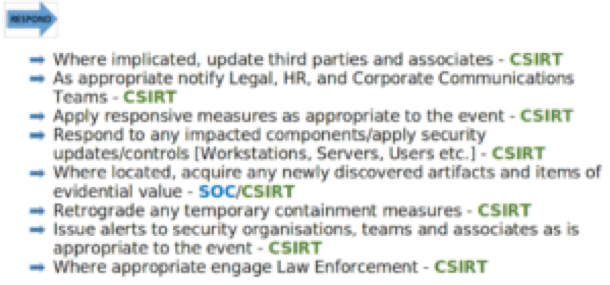
On the subject of tools, when running any kind of investigation, it is important to keep track of what has been done, and where you are in the process. Tools such as the Paliscope browser (https://www.paliscope.com/) is one of my recommend choices to have in the armory of the First Responder as Paliscope acts as your contemporaneous friend, recording all case related activity into a shareable local system secured folder - See Fig 3 where Paliscope is being used to investigate the EXIF data of an Image.
Fig 3 - PALISCOPE
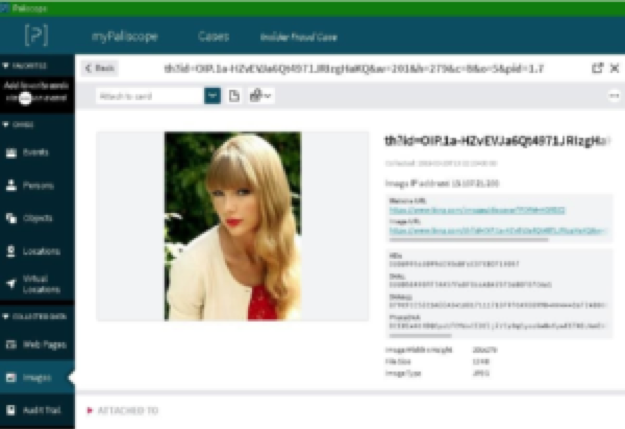
To overcome the challenges of remote acquisition, the First Responder may call on a number of tools to achieve their remote investigation requirements, and in this space one of my recommended tools is the Belkasoft Evidence Centre ( https://belkasoft.com/ec) which facilitates all the needs of the First Responder/Digital Forensics Investigator. In particular, within this conversation of the home based working communities, the tool's ability to acquire and investigative across the wire - a real advantage in the era of disrupted working practices.
Conclusion
As with 9/11, again our ways of accepting the norms of working have been imposed by the coronavirus pandemic which has imposed the need to evolve and respond to securing our business environment and users. But it is also about using our technology and imagination to defend the Global Economy, and above all we must step up to the plate, start to think out-of-the-box, and recognize the evolution of adversity must drive the mindset of survival in the Information Age.
Related Articles

Keeping It Safe: How to Protect the Systems That Run Our Lives
Imagine a world where you wake up one morning to find your air-conditioning…
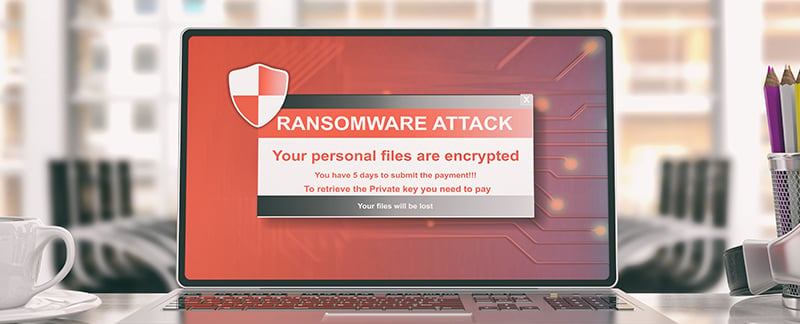
Data Security in the Age of Ransomware
In the current era of cyber insecurity and the associated everyday dangers…

Value Creation with Artificial Intelligence
Our society creates petabytes of data, making predictions and improving…
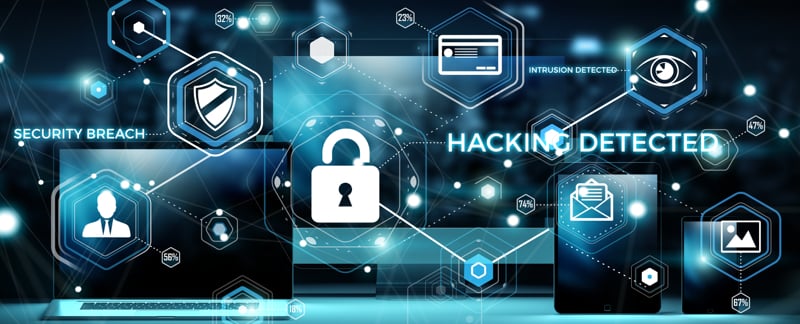
Resisting the Persistent Threat of Cyber Attacks
Delivering agile cyber-defense is now a must, with the recognition that…